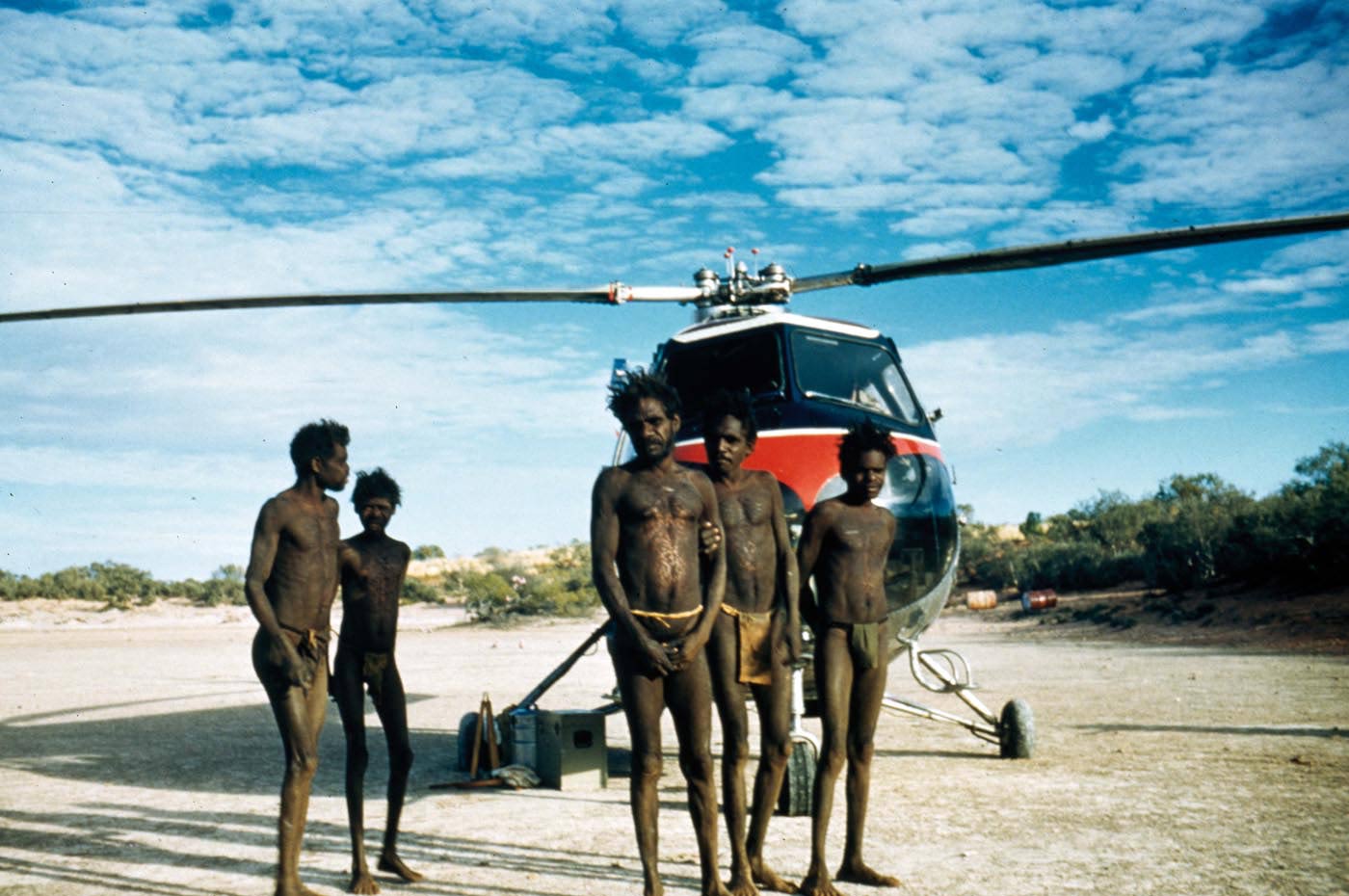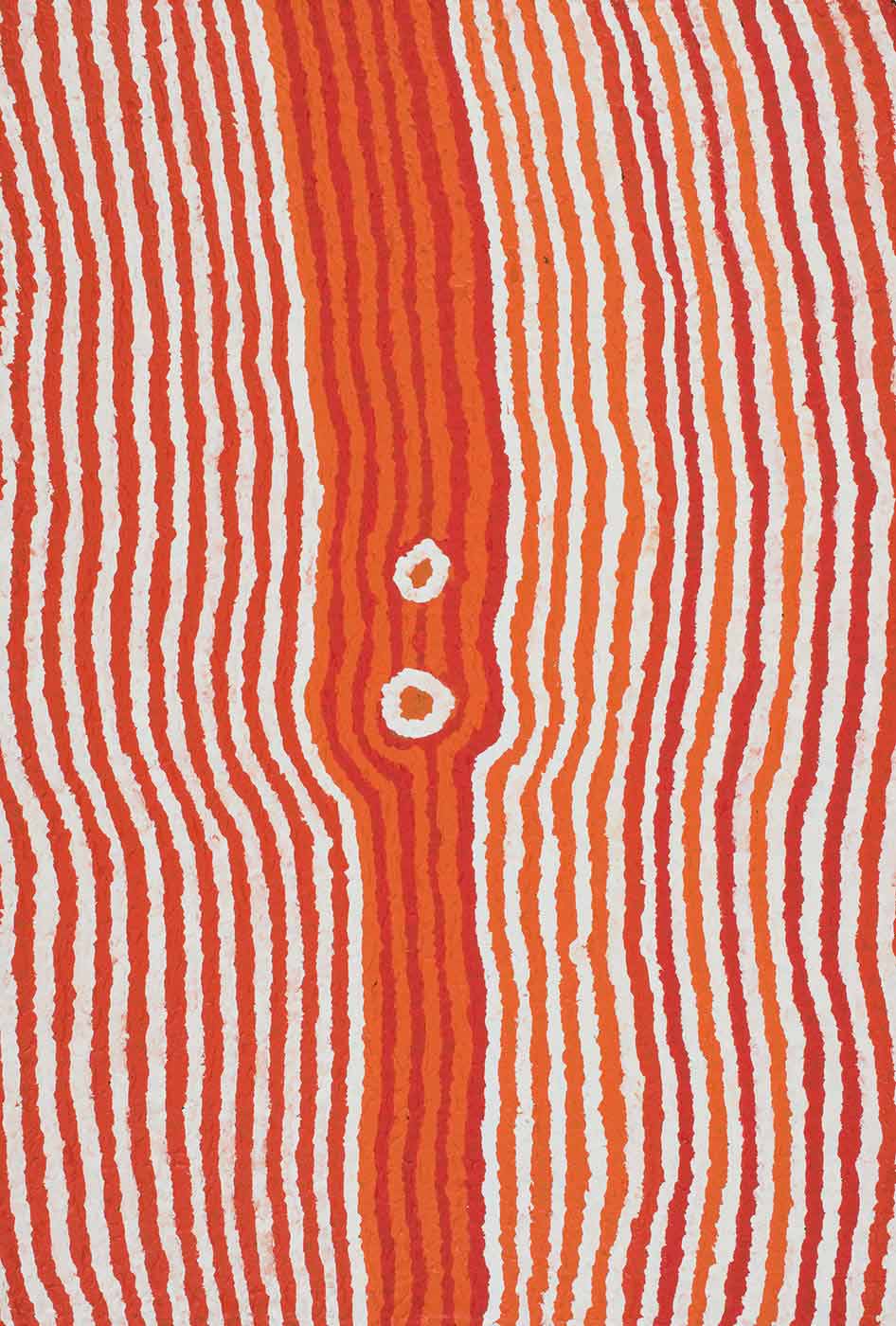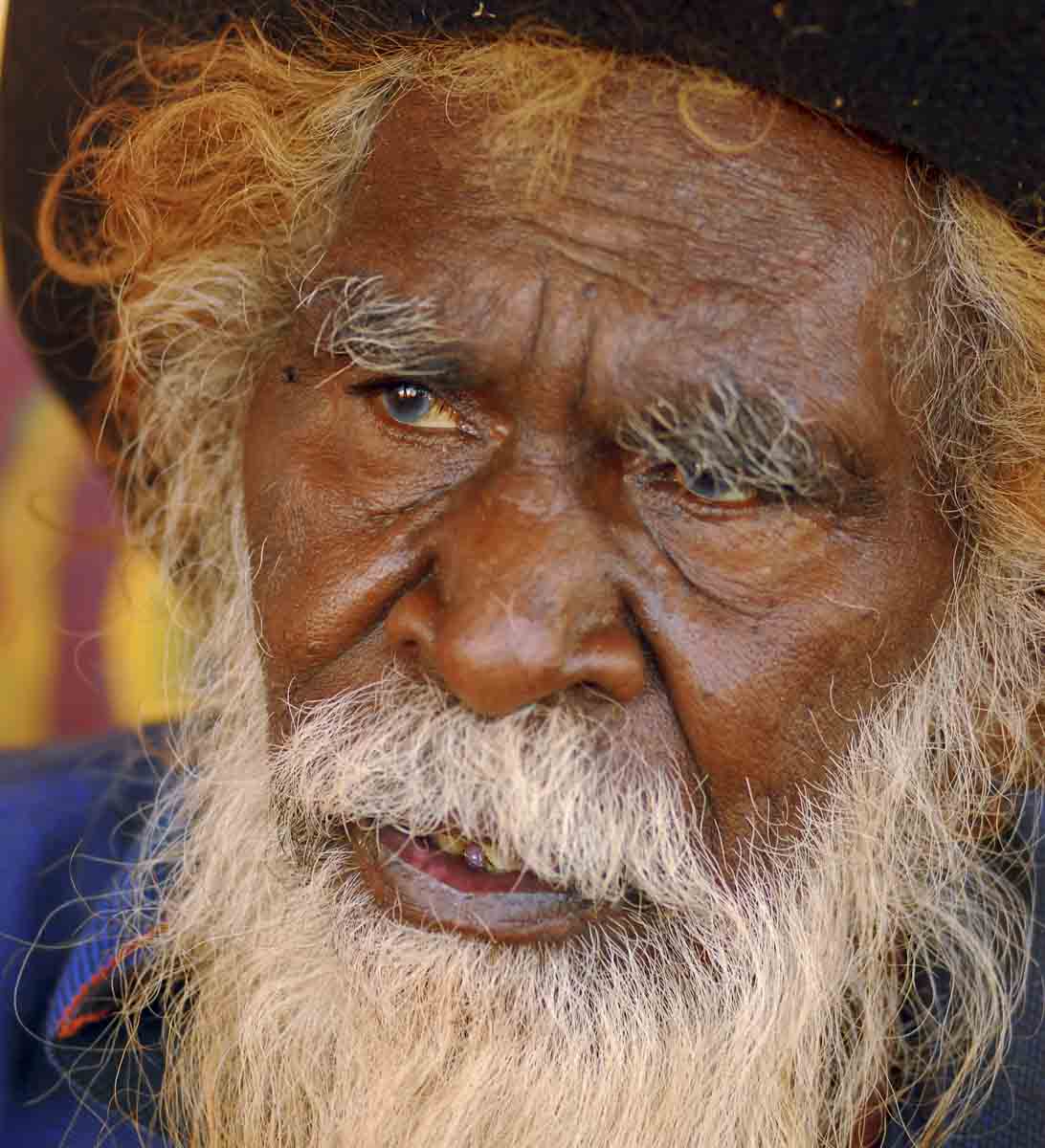Josephine Nangala, Natawalu, 2007:
We saw this helicopter coming, up in the sky. We ran into the trees, frightened because that thing, like a windmill, might cut us up.
Desert people moved away from their homelands for different reasons and at different times during the 20th century. Not all families followed the drovers or the stock route. And not all people ‘walked’ out of the desert, as the story of ‘Helicopter’ Tjungurrayi reveals.
In 1957 a mining survey party came across a group of people living near Natawalu (Well 40). Some of these people had never seen white men before. None had seen a helicopter. They thought it was a giant wasp or dragonfly, manurrkunnurku.
The survey crew shared food with the family group and encouraged their trust. But they were soon able to help them with more than just food. A 10-year-old boy, Tjungurrayi, was seriously ill and the family asked the white men to fly him north to Balgo mission for medical attention.
According to Tjungurrayi:
I was walking around long time, but I got sick … that’s when that helicopter got me. He came [in a helicopter] and put it down at my father’s camp. He spoke to me not in Kukatja, but in English. I was sitting there puzzled. I spoke to him in Kukatja, ‘Take me to Balgo to the medicine.' They put me on the helicopter right there, me and my mother.
The young boy was flown to Balgo where he recovered. He has been known as ‘Helicopter’ ever since.
Wirlki
This wirlki, sometimes referred to as a hooked or ‘number 7’ boomerang due to its shape, was collected by helicopter pilot James Ferguson when he was surveying around Natawalu in 1957. He came upon what seemed to him an abandoned camp, and picked up this boomerang as a souvenir.
He left some bullets at the camp in return. When Helicopter and Brandy Tjungurrayi visited the National Museum of Australia in 2010, they held this wirlki and suggested that it most likely belonged to their leader Ngangu (the older man in the centre of the photo above).








